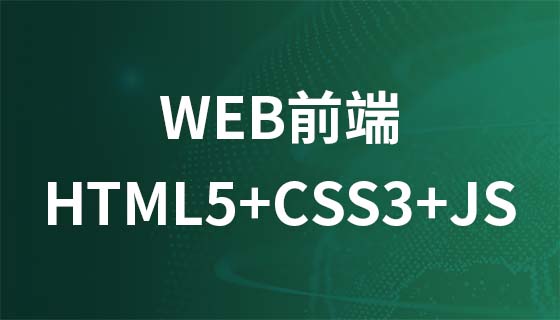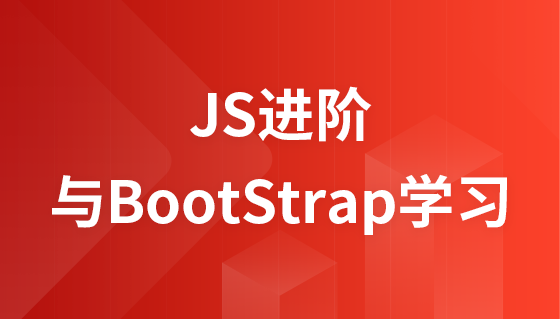
本文旨在深入探讨go语言中如何高效且准确地将复杂的嵌套json数据反序列化(unmarshal)到对应的go结构体中。我们将详细解析在处理嵌套json时常见的挑战,如字段可见性、命名约定以及结构体设计,并通过实际案例演示如何利用`json`包的结构体标签(`json:"fieldname"`)和合理的结构体拆分,实现清晰、可维护且功能完善的json数据映射。
Go语言的encoding/json包提供了强大的功能,用于在JSON数据和Go结构体之间进行转换。然而,当处理复杂的、多层嵌套的JSON数据时,开发者常会遇到一些挑战,尤其是在将JSON键名与Go结构体字段名进行映射时。原始问题中,尝试将一个包含多层嵌套abilityDescriptionX字段的JSON响应反序列化到一个大型的God结构体时,发现这些嵌套字段未能正确解析。这通常是由于以下几个核心原因:
为了克服上述挑战,Go语言提供了结构体标签(Struct Tags)机制,结合模块化的结构体设计,可以优雅地解决嵌套JSON的反序列化问题。
这是最基本也是最关键的一点。所有需要被encoding/json包反序列化的结构体字段都必须是导出的(即首字母大写)。在原始问题中,Abilitydescription1等字段虽然在JSON中是abilityDescription1,但Go结构体中的字段名是Abilitydescription1,其内部的Item_description等字段则是小写开头,导致无法被正确解析。
当JSON键名与Go结构体字段名不完全匹配时(例如,JSON使用camelCase而Go习惯使用PascalCase),可以使用json:"keyName"标签来明确指定JSON键名。
立即学习“go语言免费学习笔记(深入)”;
例如,JSON中的abilityDescription1可以映射到Go结构体中的AbilityDescription1字段,通过json:"abilityDescription1"标签实现。同样,JSON中的itemDescription可以映射到Go结构体中的ItemDescription字段,通过json:"itemDescription"标签实现。
type AbilityDescription struct {
ItemDescription ItemDescription `json:"itemDescription"`
}
type ItemDescription struct {
Cooldown string `json:"cooldown"`
Cost string `json:"cost"`
Description string `json:"description"`
MenuItems []MenuItem `json:"menuitems"` // 注意这里是数组
RankItems []RankItem `json:"rankitems"` // 注意这里是数组
SecondaryDescription string `json:"secondaryDescription"`
}
type MenuItem struct {
Description string `json:"description"`
Value string `json:"value"`
}
type RankItem struct {
Description string `json:"description"`
Value string `json:"value"`
}原始的God结构体中,Ability_description1到Ability_description5以及Basic_attack内部都包含了几乎相同的Item_description结构。这种重复定义不仅增加了代码量,也降低了可维护性。更好的做法是定义独立的嵌套结构体,然后在主结构体中引用它们。
例如,可以定义一个ItemDescription结构体、MenuItem结构体和RankItem结构体,然后在AbilityDescription和BasicAttack结构体中引用它们。
重构后的结构体示例:
首先,定义可重用的子结构体:
// MenuItem 定义了JSON中menuitems数组的元素结构
type MenuItem struct {
Description string `json:"description"`
Value string `json:"value"`
}
// RankItem 定义了JSON中rankitems数组的元素结构
type RankItem struct {
Description string `json:"description"`
Value string `json:"value"`
}
// ItemDescription 定义了能力描述中itemDescription的结构
type ItemDescription struct {
Cooldown string `json:"cooldown"`
Cost string `json:"cost"`
Description string `json:"description"`
MenuItems []MenuItem `json:"menuitems"` // JSON中是数组
RankItems []RankItem `json:"rankitems"` // JSON中是数组
SecondaryDescription string `json:"secondaryDescription"`
}
// AbilityDescription 定义了单个能力描述的结构
type AbilityDescription struct {
ItemDescription ItemDescription `json:"itemDescription"`
}
// BasicAttack 定义了基础攻击的结构
type BasicAttack struct {
ItemDescription ItemDescription `json:"itemDescription"`
}然后,将这些子结构体嵌入到主God结构体中:
type God struct {
Ability1 string `json:"Ability1"`
AbilityId1 int `json:"AbilityId1"`
AttackSpeed float64 `json:"AttackSpeed"` // 修正字段名匹配
Cons string `json:"Cons"`
HP5PerLevel float64 `json:"HP5PerLevel"` // 修正字段名匹配
Health int `json:"Health"`
Speed int `json:"Speed"`
// 使用重构后的结构体,并应用json tag
AbilityDescription1 AbilityDescription `json:"abilityDescription1"`
// 如果有其他能力,也同样定义
// AbilityDescription2 AbilityDescription `json:"abilityDescription2"`
// AbilityDescription3 AbilityDescription `json:"abilityDescription3"`
// AbilityDescription4 AbilityDescription `json:"abilityDescription4"`
AbilityDescription5 AbilityDescription `json:"abilityDescription5"`
BasicAttack BasicAttack `json:"basicAttack"`
Id int `json:"id"`
RetMsg interface{} `json:"ret_msg"` // ret_msg 为 null,使用 interface{} 或 *string
// 其他字段... 根据JSON进行补充或修正
// 例如:
// Ability2 string `json:"Ability2"`
// ...
// AttackSpeedPerLevel float64 `json:"Attack_speed_per_level"` // 注意JSON中可能没有这个字段
// ...
}注意事项:
下面是一个结合了JSON数据和修正后Go结构体的完整反序列化示例:
package main
import (
"encoding/json"
"fmt"
)
// MenuItem 定义了JSON中menuitems数组的元素结构
type MenuItem struct {
Description string `json:"description"`
Value string `json:"value"`
}
// RankItem 定义了JSON中rankitems数组的元素结构
type RankItem struct {
Description string `json:"description"`
Value string `json:"value"`
}
// ItemDescription 定义了能力描述中itemDescription的结构
type ItemDescription struct {
Cooldown string `json:"cooldown"`
Cost string `json:"cost"`
Description string `json:"description"`
MenuItems []MenuItem `json:"menuitems"` // JSON中是数组
RankItems []RankItem `json:"rankitems"` // JSON中是数组
SecondaryDescription string `json:"secondaryDescription"`
}
// AbilityDescription 定义了单个能力描述的结构
type AbilityDescription struct {
ItemDescription ItemDescription `json:"itemDescription"`
}
// BasicAttack 定义了基础攻击的结构
type BasicAttack struct {
ItemDescription ItemDescription `json:"itemDescription"`
}
// God 主结构体,包含所有字段
type God struct {
Ability1 string `json:"Ability1"`
AbilityId1 int `json:"AbilityId1"`
AttackSpeed float64 `json:"AttackSpeed"`
Cons string `json:"Cons"`
HP5PerLevel float64 `json:"HP5PerLevel"`
Health int `json:"Health"`
Speed int `json:"Speed"`
AbilityDescription1 AbilityDescription `json:"abilityDescription1"`
AbilityDescription5 AbilityDescription `json:"abilityDescription5"` // 根据提供的JSON,只有1和5有数据
BasicAttack BasicAttack `json:"basicAttack"`
Id int `json:"id"`
RetMsg interface{} `json:"ret_msg"` // 可以是null,所以用interface{}
// 其他字段根据实际JSON数据补充,并确保首字母大写和正确的json tag
// 例如:
// Ability2 string `json:"Ability2"`
// AbilityId2 int `json:"AbilityId2"`
// ...
}
func main() {
jsonResponse := `{
"Ability1": "Noxious Fumes",
"AbilityId1": 7812,
"AttackSpeed": 0.86,
"Cons": "",
"HP5PerLevel": 0.47,
"Health": 360,
"Speed": 350,
"abilityDescription1": {
"itemDescription": {
"cooldown": "12s",
"cost": "60/70/80/90/100",
"description": "Agni summons a cloud of noxious fumes at his ground target location, doing damage every second. Firing any of Agni's abilities into the fumes detonates the gas, stunning all enemies in the radius.",
"menuitems": [
{
"description": "Ability:",
"value": "Ground Target"
},
{
"description": "Affects:",
"value": "Enemy"
},
{
"description": "Damage:",
"value": "Magical"
},
{
"description": "Radius:",
"value": "20"
}
],
"rankitems": [
{
"description": "Damage per Tick:",
"value": "10/20/30/40/50 (+5% of your magical power)"
},
{
"description": "Fumes Duration:",
"value": "10s"
},
{
"description": "Stun Duration:",
"value": "1s"
}
],
"secondaryDescription": ""
}
},
"abilityDescription5": {
"itemDescription": {
"cooldown": "",
"cost": "",
"description": "After hitting with 4 basic attacks, Agni will gain a buff. On the next cast of Flame Wave or Rain Fire, all enemies hit by those abilities will be additionally set ablaze, taking damage every .5s for 3s.",
"menuitems": [
{
"description": "Affects:",
"value": "Enemy"
},
{
"description": "Damage:",
"value": "Magical"
}
],
"rankitems": [
{
"description": "Damage per Tick:",
"value": "5 (+10% of your magical power)"
}
],
"secondaryDescription": ""
}
},
"basicAttack": {
"itemDescription": {
"cooldown": "",
"cost": "",
"description": "",
"menuitems": [
{
"description": "Damage:",
"value": "34 + 1.5/Lvl (+20% of Magical Power)"
},
{
"description": "Progression:",
"value": "None"
}
],
"rankitems": [],
"secondaryDescription": ""
}
},
"id": 1737,
"ret_msg": null
}`
var god God
err := json.Unmarshal([]byte(jsonResponse), &god)
if err != nil {
fmt.Println("Error unmarshaling JSON:", err)
return
}
fmt.Printf("Successfully unmarshaled God data:\n%+v\n", god)
fmt.Printf("\nAbility 1 Description Cooldown: %s\n", god.AbilityDescription1.ItemDescription.Cooldown)
fmt.Printf("Ability 1 Description Menu Item 0 Description: %s\n", god.AbilityDescription1.ItemDescription.MenuItems[0].Description)
fmt.Printf("Basic Attack Description Damage: %s\n", god.BasicAttack.ItemDescription.MenuItems[0].Value)
fmt.Printf("RetMsg: %v (Type: %T)\n", god.RetMsg, god.RetMsg)
}在Go语言中处理嵌套JSON数据时,遵循以下最佳实践可以有效避免反序列化问题:
通过以上方法,开发者可以更有效地在Go应用程序中处理各种复杂结构的JSON数据,确保数据转换的准确性和代码的健壮性。
以上就是深入理解Go语言中嵌套JSON与结构体的映射的详细内容,更多请关注php中文网其它相关文章!

每个人都需要一台速度更快、更稳定的 PC。随着时间的推移,垃圾文件、旧注册表数据和不必要的后台进程会占用资源并降低性能。幸运的是,许多工具可以让 Windows 保持平稳运行。




Copyright 2014-2025 https://www.php.cn/ All Rights Reserved | php.cn | 湘ICP备2023035733号